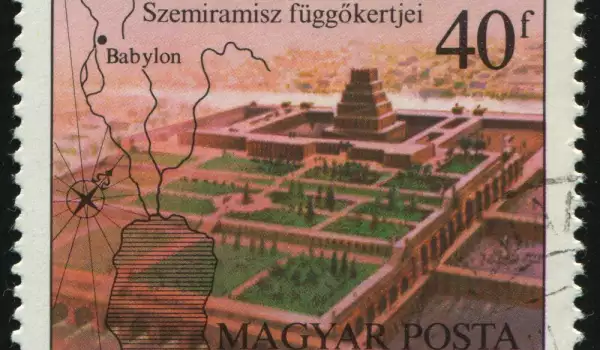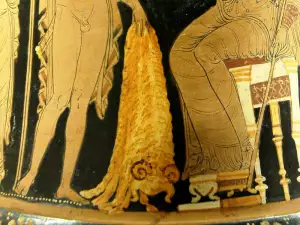The Hanging Gardens of Semiramis is the second wonder of the world. The work was "beauty and joy for the eyes."
Until the beginning of last century, these gardens were considered pure fiction, and their descriptions - stylistic exercises of wildly poetic imagination.

Here is what the legend says: "Once, long ago in Syria pigeons saved a little girl, abandoned by the goddess of love Aphrodite. Birds shielded the child with their wings, and in their beaks brought milk. One day, the girl was found by a good man who called Semiramis, which in Aramaic means dove. It became the most personal girl among girls. Semeramis married Onnes, who took hold in the ancient city of Nineveh, where she eventually bore him two sons".
The path does not end here. The king noticed her amazing beauty and ingenuity, and asked her hand so she remarried, and after the death of the king, took power into her own hands. Being very enterprising, she decided to outdo her husband. Of Euphrates she rose a new town called Babylon.
However, experts argue that Semiramis is a historical person, although little is known about her. They say she lived around the 7-8 century BC, presumably even that Semeramis is Nitroida, wife of King Nebuchadnezzar.
However, there is no doubt that the hanging gardens ever existed. At the end of XX century, remains were discovered by German archaeologist Kolduey. They are found in nearly five meters of silt and clay stones.
The garden was in the form of a square, and each of its parts was approximately 120 meters. It had vaults that are based on pedestals of stone blocks stacked one upon another like cubes.
Stone shelves were filled with soil so that they can grow even the tallest trees. At the top were stepped terraces, where the special pumps that bring water from the Euphrates lay. And why are they called hanging gardens? According to ancient scriptures a hanging garden is one, in which plants are high above the earth, and that seems to hang in the air.
Stone pillars bore the burden of the whole edifice, and adorned their lower parts formed in the garden hall or colonnade. On them, were lined palm beams, and on them, were stones and a large, thick layer of soil where planted in soil were other deciduous trees and various types of flowers.
Why are the gardens still considered a wonder of the world? Although other ancient buildings are outweighing them by size and cost, they differ from them, and exceed them, first with their originality, with the exceptional idea, which caused them, second - with the bold decision of the technical construction and ingenious water pumps, and third, the facility - with its beauty.










